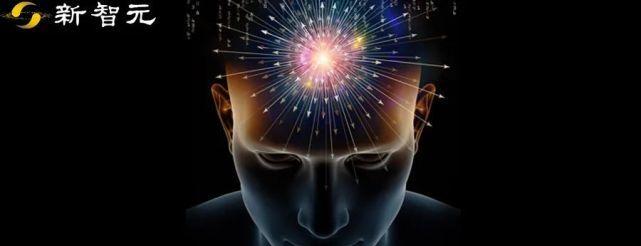
Reporting by XinZhiyuan
Edit: Time Rayan
A new brain science research study by South Korea, Belgium and other countries found that the use of deep learning can quantify consciousness, and experimental data have been obtained for different conditions such as sleep, anesthesia, and brain injury.
Now, scientists have a new understanding of human consciousness!
This research is to solve the puzzle through the AI method of deep learning algorithms.
unexpectedly! Consciousness in different conditions such as sleep, general anesthesia, and severe brain damage is effectively measured.
Quantify human consciousness
Recently, a project study on HBP SGA3 and DoCMA funded by the European Union has made significant progress and has been able to quantify human consciousness.
The paper, titled "Quantifying Arousal and Consciousness in Different States Using Explainable Deep Learning," was published in Nature Communications on February 25 this year.
Full-text download address: https://www.nature.com/articles/s41467-022-28451-0
The project is led by Minji Lee of Korea University, and the university of Liège in Belgium is also involved in collaborative research.
The first author of the paper, Minji Lee, Department of Brain and Cognitive Engineering, Korea University, Korea
In this study, the team successfully pioneered an interpretable consciousness indicator (ECI) that helps scientists explore the different components of consciousness.
Consciousness will be described in two parts: one called aura, or "waking state," and the other called easeness, referring to a person's "cognitive ability."
In other words, when a normal person opens his eyes, it means that the person is in a "conscious state." If he has the ability to receive different instructions and act according to them, it indicates that he has "cognitive ability".
However, people have different levels of conscious capacity under different conditions, including dreamless sleep, dreamy sleep, anesthesia states, and severe brain damage.
This study used three types of experimental data from sleep, general anesthesia, and severe brain injury, and obtained 6, 16, and 34 observation samples, respectively.
So far, this is the first study to quantify consciousness, and the experiment has obtained more reliable data.
However, paper collaborator Olivia Gosseries, director of the Coma Research Group at the University of Liège, said that "more research is needed to apply this new tool in clinical practice and develop an online real-time tool."
Olivia Gosseries, University of Liege, Belgium
Olivia believes that our research still has a way to go before the ECI awareness indicator is put into use in the operating room or ICU.
ECI awareness indicator
How was the research conducted with the help of ECI? Here is a schematic diagram of the ECI Awareness Indicator framework:
How it works can be explained step by step as:
The first step is to convert the original EEG signal into a 3D space-time matrix.
In the second step, the transformed 3D features are used for the two conscious components of convolutional neural networks: the "awake state" and the "cognitive ability", in which the EEG data is trained into two categories: low class and high class.
In the third step, the interclass probabilities for each state of consciousness are averaged and used to calculate the ECI in each session.
As a final step, study which brain signals the model has learned using hierarchical association propagation (LRP) and why it makes such decisions.
The study pointed out that the ECI consciousness indicator can distinguish between "awake state" and "cognitive ability" with the help of deep learning.
The plus sign indicates a high level, and the minus sign indicates a low level
The researchers say that this new type of research tool is a reliable "discriminator", an objective tool for measuring consciousness.
At the same time, ECI also has the potential to improve the level of clinical care for patients in different settings, such as monitoring anesthesia induction status during surgery and diagnosing coma or vegetative state.
Studies have shown that the "level of wakefulness" and "cognitive ability" of most states are consistent, and the above figure shows that the "awake state" and "cognitive ability" columns have the same "+" and "-".
However, rapid eye movement sleep states (REM) and anesthesia caused by ketamine have lower "levels of wakefulness" and higher "cognitive abilities", which are significantly different from other states.
The paper's second author, Professor Seong-Whan Lee of the Department of AI at Korea University in Korea, said the paper demonstrates the world's first ECI awareness measurement, a new technology that can quantify both "sobriety" and "cognitive level."
The study has carried out 8 kinds of conscious explanation of 3 types of conditions: physiological, pharmacological and pathological:
In the physiological state, the normal waking state of the first category is high "awakeness" and high "cognitive ability"; the second type, the rapid eye movement (REM) sleep state of dreaming is low "awakeness" and high "cognitive ability"; the third category, the dreamless non-RAPID eye movement (NREM) sleep state is low "awakeness" and low "cognitive ability".
In the pharmacological state, class 4, ketamine anesthesia is low "sobriety", high "cognitive ability"; category 5, propofol or xenon-induced anesthesia is low "sobriety", low "cognitive ability".
Among pathological states, category 6, micro-conscious state (MCS), is high "sobriety" and high "cognitive ability"; category 7, incapacitated micro-conscious state (MCS*) is high "sobriety" and high "cognitive ability"; category 8, unresponsive wakefulness syndrome (UWS) is high "awakeness" and low "cognitive ability".
In addition, the parietal region of the brain is most correlated with the measure of a person's "lucidity" and "cognitive ability".
It is reported that this HBP SGA3 (full name: Human Brain Project Specific Grant Agreement 3) is the final stage of the human brain research project.
The collaboration showcases the RAPIDS shared data platform tool, which is very effective in studying large-scale sets of human neural images.
In the future, experts in quantitative consciousness will continue to develop digital neuroscience and brain science with the help of some of the results of the HBP group.
Resources:
https://neurosciencenews.com/human-consciousness-ai-20447/
https://www.jkwshk.tv/gwjz/20220423/135634.html
0.0MB